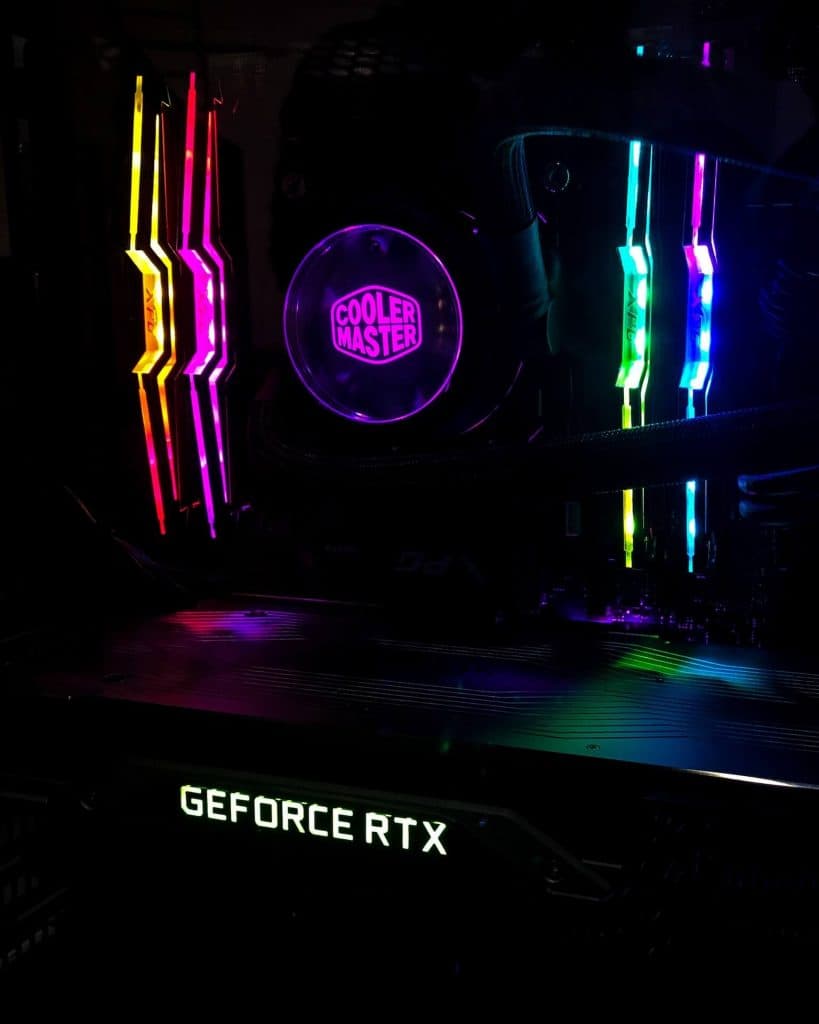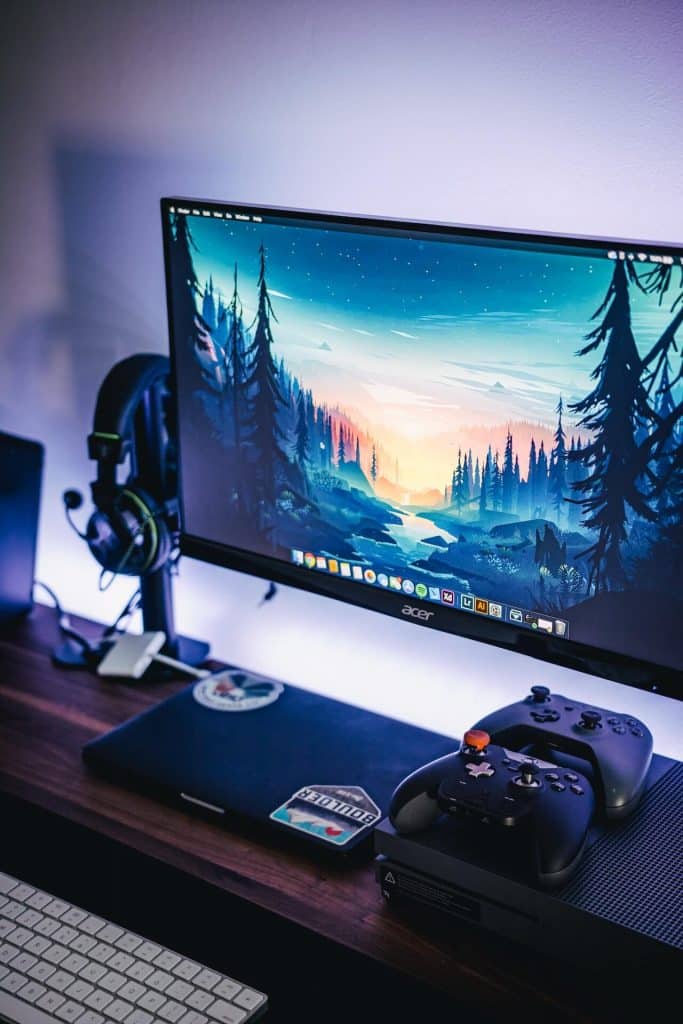UPDATED: July 13, 2023
Evolution of Gaming Laptops: A Journey from Humble Beginnings to Technological Mastery. Once a rudimentary version of portable computing, gaming laptops have dramatically transformed over time. From the initial portable computers to today's highly customizable powerhouses, the progress in power, design, and technology is remarkable. This article explores the fascinating chronicle of gaming laptops, tracing their development from inception to their prospective, innovative future.
Evolution of Gaming Laptops: The Early Days of Portable Gaming
The Osborne 1: The First Portable Computer
The Osborne 1, released in 1981, was the first truly portable computer. Weighing 24 pounds, the Osborne 1 featured a 5-inch display, a 64 KB memory, and a 1.77 MHz Zilog Z80 processor. While its capabilities were limited, it paved the way for future portable computers and gaming devices.
Despite its hefty weight, the Osborne 1 was popular among business professionals who needed to work on-the-go. Its portability allowed them to bring their work with them, without having to lug around a heavy desktop computer. However, the Osborne 1 was not marketed towards gamers, as gaming was not yet a mainstream activity.

The Advent of Gaming Handhelds: Game Boy and Atari Lynx
In 1989, the Game Boy was released, becoming one of the most influential gaming devices of all time. Its compact size, long battery life, and low price point made it a popular choice for gamers around the world. The Game Boy's monochrome screen may seem outdated by today's standards, but at the time it was a major technological advancement.
Around the same time, the Atari Lynx was also released, offering better graphics and a color screen. However, the Lynx was not as successful as the Game Boy, due to its higher price point and shorter battery life.
Despite the competition, the Game Boy remained the dominant handheld gaming device for many years. Its library of games grew to include popular titles such as Tetris, Super Mario Land, and Pokemon.
Early Gaming Laptops: The 1990s
In the 1990s, laptop manufacturers began to include more gaming-oriented features. Laptops such as the Toshiba Satellite Pro 400CDT and the Gateway Solo 2100 offered improved graphics capabilities and faster processors. However, they were still limited by their size and battery life.
These early gaming laptops were primarily marketed towards gamers who wanted to play games on-the-go. However, they were still quite bulky and heavy compared to modern gaming laptops. Additionally, their battery life was limited, which made it difficult to play games for extended periods of time without being plugged in.
Despite these limitations, the early gaming laptops paved the way for the powerful and portable gaming devices we have today. As technology continued to improve, gaming laptops became thinner, lighter, and more powerful, allowing gamers to play their favorite games wherever they go.
Evolution of Gaming Laptops: The 2000s - A New Era for Gaming Laptops
The 2000s marked a significant shift in the world of gaming laptops, with manufacturers pushing the boundaries of what was possible in terms of performance and design. As gaming became more popular, laptops began to be seen as a viable alternative to traditional desktop gaming rigs, thanks in large part to the integration of dedicated graphics cards.
The Rise of Dedicated Graphics Cards
The introduction of dedicated graphics cards was a game-changer for the world of gaming laptops. Prior to this, most laptops relied on integrated graphics, which were not powerful enough to handle the demands of modern games. The Dell Inspiron XPS and the Alienware Area-51m were among the first gaming laptops to feature dedicated graphics cards, allowing for greater gaming performance and higher resolution graphics. This paved the way for a new generation of gaming laptops that were capable of delivering an immersive gaming experience on the go.

The Emergence of Major Gaming Laptop Brands
As the market for gaming laptops grew, major brands began to enter the fray. Companies such as ASUS, MSI, and Acer, among others, began to offer their own gaming laptop models, competing with established brands such as Dell and Alienware. This led to increased competition and innovation, with manufacturers constantly pushing the boundaries of what was possible in terms of design and performance.
One of the standout brands of this era was ASUS, which quickly gained a reputation for producing high-quality gaming laptops that were both powerful and stylish. The ASUS ROG (Republic of Gamers) series, in particular, was a hit with gamers, offering a range of laptops with cutting-edge hardware and sleek designs.
The Impact of Online Gaming on Laptop Development
The emergence of online gaming and esports in the 2000s highlighted the need for faster and more powerful gaming laptops. Laptop manufacturers began to focus on creating machines with faster processors, improved cooling systems, and higher refresh rate displays to keep up with the demands of online gaming.
One of the key challenges for gaming laptops during this era was heat management. As laptops became more powerful, they generated more heat, which could lead to performance issues and even hardware failure. Manufacturers responded by developing new cooling systems, such as liquid cooling and advanced fan designs, to keep temperatures under control.
Another key development during this time was the rise of high-refresh-rate displays. Traditional laptop displays typically had a refresh rate of 60Hz, which could lead to motion blur and other visual artifacts. To address this, manufacturers began to offer laptops with displays that had refresh rates of 120Hz or higher, resulting in a smoother and more responsive gaming experience.
In conclusion, the 2000s were a transformative era for gaming laptops, with manufacturers pushing the boundaries of what was possible in terms of performance and design. The introduction of dedicated graphics cards, the emergence of major gaming laptop brands, and the impact of online gaming all contributed to the development of a new generation of laptops that were capable of delivering an immersive gaming experience on the go.
Evolution of Gaming Laptops: The 2010s - The Age of Customization and Performance
The 2010s were a decade of rapid advancements in technology, and the gaming industry was no exception. It was a time when gaming laptops became more powerful, customizable, and sleeker than ever before. In this article, we will explore some of the key trends that shaped the gaming laptop industry during the 2010s.
The Introduction of Customizable Gaming Laptops
Gaming laptops have come a long way since their inception. In the early days, they were bulky and lacked the power to run the latest games. However, in the 2010s, gaming laptop manufacturers began to offer customizable laptops, allowing gamers to personalize their machines to meet their specific needs. Brands such as Origin PC and Alienware, among others, began offering customizable laptops with options for faster processors, more powerful graphics cards, and improved cooling systems.
Customizable gaming laptops allowed gamers to choose the components that best suited their needs and budget. Gamers could choose from a range of options, including the type of processor, the amount of RAM, the size of the hard drive, and the graphics card. This gave gamers the ability to build a machine that could handle the latest games without breaking the bank.
Understanding Mechanical Keys
Mechanical keys are not new, but their popularity among gamers has skyrocketed recently. Their high level of responsiveness and feedback can significantly enhance your gaming experience. If you're considering a new keyboard, learn more about the types of keys in this comprehensive guide on gaming laptop keyboards.

The Battle for Thinner and Lighter Designs
As gaming laptops became more powerful, manufacturers began to focus on making them thinner and lighter. Brands such as Razer and ASUS introduced ultra-thin gaming laptops, featuring powerful processors and dedicated graphics cards that were comparable to traditional gaming laptops but with a thinner and lighter design.
Thin and light gaming laptops were a game-changer for gamers who wanted a powerful machine that was easy to carry around. These laptops were perfect for gamers who wanted to take their gaming on the go, whether it was to a friend's house or a gaming tournament. They were also ideal for gamers who wanted a machine that could double as a work laptop.
Sound Quality and Immersive Gaming
Sound quality is the linchpin of an immersive gaming experience, turning the act of playing into a journey into an alternate universe. Our comprehensive guide takes you through the world of gaming laptop sound systems, highlighting not just the importance, but the intricate details that go into creating an immersive audio experience.
We delve into the components and their functionalities, explaining how they interact to create the tonal balance, spatial distribution, and high-fidelity sound reproduction crucial to your gaming experience. From integrated speakers to advanced sound tech like Dolby Atmos, we help you understand the untold power of sound in gaming and how to unlock it. With this knowledge, your next gaming laptop purchase won't be just about visual quality, but also about choosing a machine that serves as your gateway to truly immersive gaming.
The Push for Higher Refresh Rates and Resolution
In the 2010s, gaming laptops began to feature displays with higher refresh rates and resolution, offering a more immersive gaming experience. Brands such as Acer and Alienware began to offer laptops with displays featuring 120Hz or 144Hz refresh rates and resolutions up to 4K, providing gamers with more detail and smoother animations.
Higher refresh rates and resolutions made games look more lifelike and immersive. Gamers could see more detail in the game world, and animations were smoother and more fluid. This made for a more enjoyable gaming experience, and it also gave gamers a competitive edge in online multiplayer games.
In conclusion, the 2010s were a decade of significant advancements in the gaming laptop industry. Customizable gaming laptops, thin and light designs, and higher refresh rates and resolutions were just a few of the trends that shaped the industry during this time. As we move into the 2020s, it will be interesting to see what new innovations the gaming laptop industry has in store for us.
Step-by-step Guide to Cleaning Your Gaming Laptop
Cleaning your gaming laptop is no small task. From cleaning the keyboard to the cooling system, each component requires specific cleaning methods. Here's a step-by-step guide on how to meticulously cleanse your gaming laptop without causing any damage.
Evolution of Gaming Laptops: The Future of Gaming Laptops
The Integration of Virtual Reality and Augmented Reality
In the future, gaming laptops are likely to feature better integration with virtual reality and augmented reality technology. Brands such as ASUS and Acer have already begun to offer laptops with VR-specific features, such as higher refresh rates and dedicated VR ports, and this trend is likely to continue as the technology becomes more widespread.
Virtual reality and augmented reality are becoming increasingly popular in the gaming world, providing players with immersive experiences that were previously impossible. As the technology continues to advance, gaming laptops will need to keep up in order to provide the best possible experience for gamers. This may include improvements in graphics cards and processors, as well as better integration with VR and AR headsets.
The Development of Cloud Gaming and Streaming Services
Cloud gaming and streaming services, such as Amazon Prime Gaming and Microsoft xCloud, are becoming more popular, providing gamers with the ability to play games on lower-powered devices with a stable internet connection. This trend is likely to continue, with gaming laptops offering better integration with cloud gaming services and improved internet connectivity.
One of the major benefits of cloud gaming is the ability to play games on a variety of devices, without needing to invest in expensive hardware. This could be particularly appealing to gamers who are on a budget, or who want to play games on the go. As gaming laptops continue to improve in terms of internet connectivity and processing power, they will be well-positioned to take advantage of this trend.
The Ongoing Pursuit of Improved Battery Life and Cooling Solutions
Battery life and cooling solutions continue to be a challenge for gaming laptops, with more powerful hardware requiring more energy and generating more heat. In the future, gaming laptops are likely to feature better battery life and cooling solutions, with manufacturers focusing on making machines that are both powerful and portable.
Improvements in battery life and cooling solutions could have a significant impact on the gaming experience, allowing players to enjoy their favorite games for longer periods of time without needing to stop and recharge or worry about overheating. This could also make gaming laptops more appealing to a wider audience, including students and professionals who need a powerful machine for work or school.

Evolution of Gaming Laptops: Charting the Course Ahead
The evolution of gaming laptops has been a long and exciting journey. From the first portable computers to the customizable machines of today, gaming laptops have continued to push the boundaries of what is possible, both in terms of performance and design. As technology continues to advance, the future of gaming laptops looks to be bright, with continued improvements in power, customization, and immersive experiences. Whether you're a casual gamer or a hardcore enthusiast, there has never been a better time to invest in a gaming laptop.





